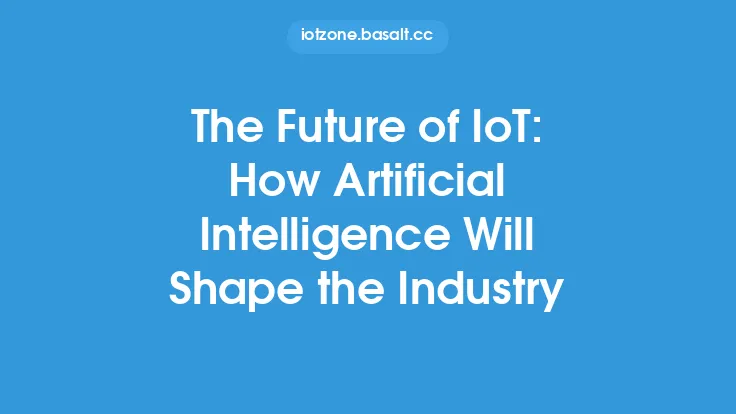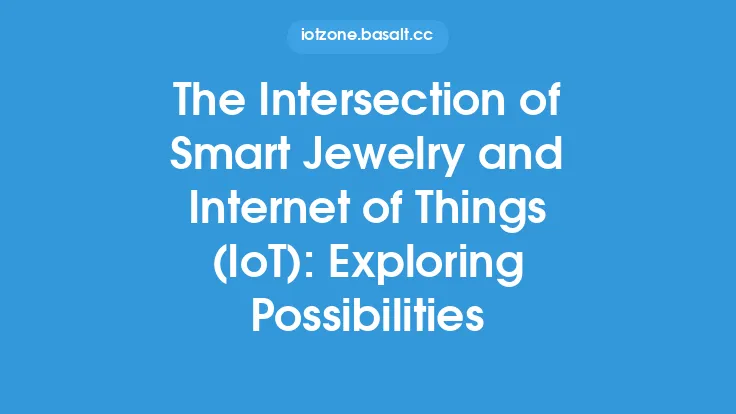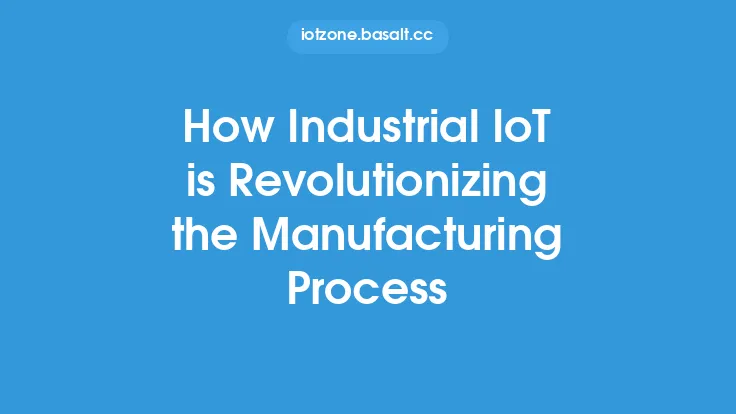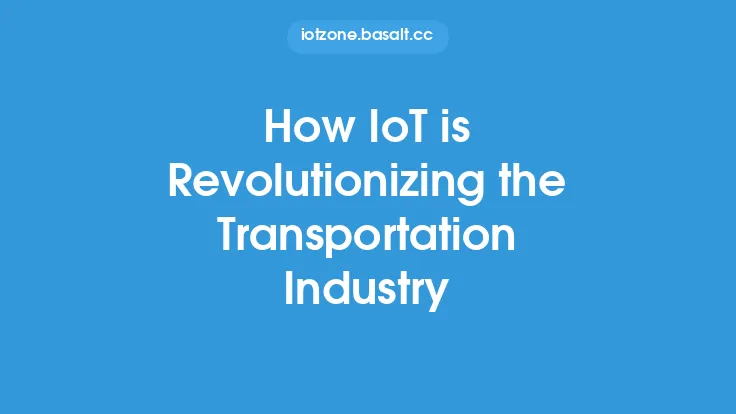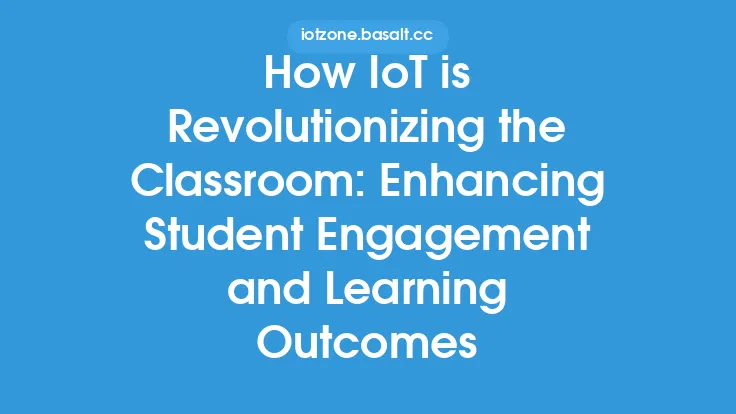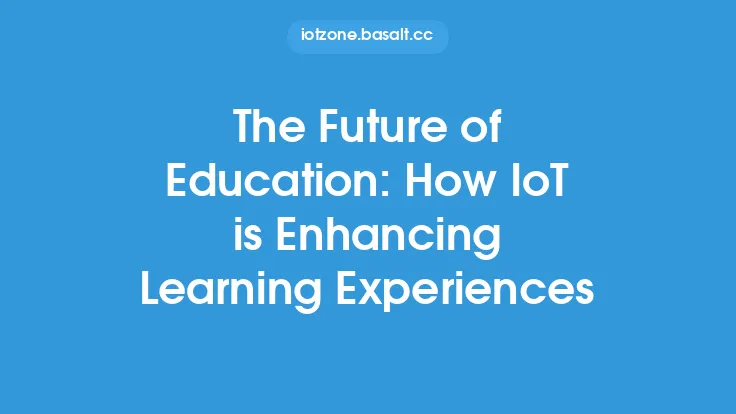The Internet of Things (IoT) has been rapidly evolving over the past decade, with an increasing number of devices becoming connected to the internet and to each other. This has led to a vast amount of data being generated, which can be used to improve the efficiency and effectiveness of various systems and applications. However, the sheer volume and complexity of this data have created new challenges, particularly in terms of processing, analysis, and decision-making. This is where Artificial Intelligence (AI) comes in, as it has the potential to revolutionize the IoT by enabling devices to learn from data, make decisions autonomously, and interact with their environment in a more intelligent and adaptive way.
Introduction to AI in IoT
Artificial Intelligence is a broad field that encompasses a range of techniques and technologies, including machine learning, natural language processing, and computer vision. In the context of IoT, AI can be used to analyze data from sensors and devices, identify patterns and anomalies, and make predictions about future events. This can be particularly useful in applications such as predictive maintenance, where AI-powered systems can detect potential faults or failures before they occur, reducing downtime and improving overall efficiency. Additionally, AI can be used to optimize the performance of IoT devices, by adjusting parameters such as power consumption, data transmission rates, and sensor sensitivity.
Key Technologies and Techniques
Several key technologies and techniques are enabling the integration of AI and IoT, including edge computing, fog computing, and cloud computing. Edge computing involves processing data at the edge of the network, i.e., on the device itself or on a nearby gateway, rather than in the cloud. This can reduce latency, improve real-time processing, and enhance security. Fog computing is a related concept that involves processing data in a fog node, which is a device that is located between the edge and the cloud. Cloud computing, on the other hand, involves processing data in a remote data center, which can provide greater scalability and flexibility.
Applications of AI in IoT
There are many potential applications of AI in IoT, including industrial automation, smart energy management, and transportation systems. In industrial automation, AI can be used to optimize production processes, predict maintenance needs, and improve product quality. In smart energy management, AI can be used to optimize energy consumption, predict energy demand, and detect anomalies in energy usage patterns. In transportation systems, AI can be used to optimize traffic flow, predict traffic congestion, and improve safety.
Technical Challenges and Limitations
Despite the many potential benefits of AI in IoT, there are also several technical challenges and limitations that need to be addressed. One of the main challenges is the need for high-quality data, which can be difficult to obtain in IoT systems where devices may be subject to noise, interference, and other forms of degradation. Another challenge is the need for robust and reliable AI algorithms, which can be difficult to develop and deploy in IoT systems where devices may have limited processing power and memory. Additionally, there are also concerns about security and privacy, as AI-powered IoT systems may be vulnerable to cyber attacks and data breaches.
Future Directions and Opportunities
Looking ahead, there are many future directions and opportunities for AI in IoT, including the development of more advanced AI algorithms, the integration of AI with other technologies such as blockchain and 5G, and the application of AI in new and emerging areas such as smart cities and smart healthcare. Additionally, there is also a need for more research and development in areas such as explainability, transparency, and accountability, as AI-powered IoT systems become increasingly pervasive and autonomous. Overall, the integration of AI and IoT has the potential to revolutionize many aspects of our lives, from industrial automation and smart energy management to transportation systems and smart cities.
Real-World Examples and Case Studies
There are many real-world examples and case studies of AI in IoT, including the use of AI-powered predictive maintenance in industrial settings, the use of AI-powered smart energy management in commercial buildings, and the use of AI-powered traffic management in urban areas. For example, the company Siemens has developed an AI-powered predictive maintenance system for industrial equipment, which uses machine learning algorithms to analyze sensor data and predict potential faults or failures. Similarly, the company Google has developed an AI-powered smart energy management system for commercial buildings, which uses machine learning algorithms to optimize energy consumption and reduce waste.
Conclusion and Recommendations
In conclusion, the integration of AI and IoT has the potential to revolutionize many aspects of our lives, from industrial automation and smart energy management to transportation systems and smart cities. However, there are also several technical challenges and limitations that need to be addressed, including the need for high-quality data, robust and reliable AI algorithms, and concerns about security and privacy. To realize the full potential of AI in IoT, it is recommended that organizations invest in research and development, develop more advanced AI algorithms, and integrate AI with other technologies such as blockchain and 5G. Additionally, there is also a need for more education and training in areas such as AI, IoT, and data science, as well as a need for more collaboration and cooperation between industry, academia, and government.
